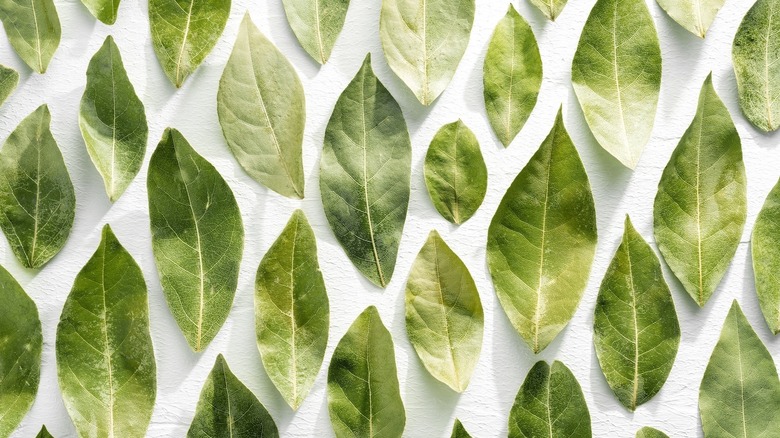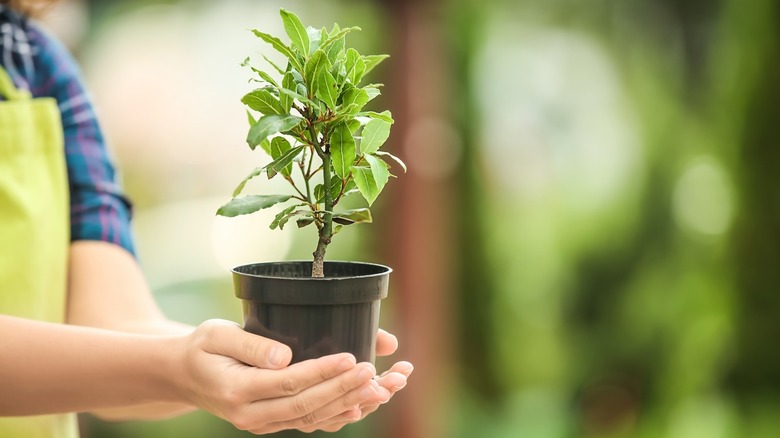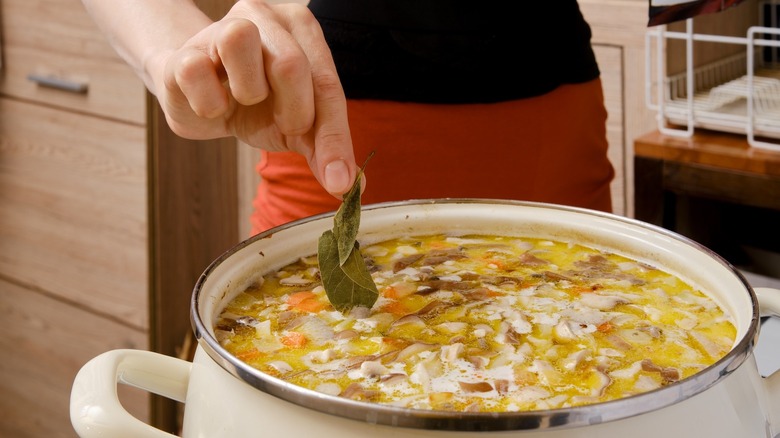Should You Eat Bay Leaves?
In the world of culinary mysteries, one character remains shrouded in intrigue — the bay leaf. It's found its way into many recipes, from pickling brine to Italian ribollita soup, but few know what it's doing there. The mystery deepens when it comes to the all too common case of the missing bay leaf; Two bay leaves are carefully counted as they're added to a recipe, but when it's time to remove them and serve, one of the leaves has up and vanished. This begs the question — if you encounter said bay leaf while eating, is it safe to chomp down, or are you putting yourself in danger?
Luckily, this part of the mystery has been solved. Technically, you can eat bay leaves, but you shouldn't. Even after hours simmering in a stew, bay leaves remain hard and sharp. Their strong, herbaceous flavor, wonderful for gently infusing into dishes, becomes overpowering and unpleasant when bitten on directly. Think of bay leaves as you would a cinnamon stick — integral for flavoring but far from enjoyable to chew on.
What exactly are bay leaves?
Bay leaves come from the laurel tree, specifically the Laurus nobilis, native to the Mediterranean and other warm climates. When you pick up a jar from the spice aisle, the leaves are dried and usually whole, but can also be found in fresh or ground preparations. Beyond the kitchen, bay leaves have a storied past in folk medicine, purportedly offering benefits for respiratory and digestive issues, though modern research on these effects is limited.
In today's kitchens, bay leaves are known for their enigmatic flavor — somewhere between oregano and thyme, with a hint of eucalyptus. They're best used in dishes that allow them to steep and meld into liquid, like soups, stews, rice, meats, and even Thanksgiving turkey brine. Despite their ubiquity, there's a healthy debate surrounding their utility. Some question their impact, given their subtlety and the fact they're removed before serving. Yet, others argue that bay leaves contribute a special depth of flavor, enhancing dishes in a way that's not always immediately identifiable but certainly missed when omitted.
The do's and don'ts of cooking with bay leaves
The idea of crunching on a bay leaf isn't just unappetizing — it's potentially dangerous. Their tough texture can be a hazard, posing risks of cuts inside the mouth, choking, or indigestion. That's why eating whole bay leaves is high on the "don't do" list. When it comes to medicinal use (read: doses much higher than a bay leaf or two), bay leaves have been noted for interactions with certain medications, like sedatives and diabetes drugs, due to their ability to induce sleepiness and lower blood sugar levels.
Despite their unpleasant texture and medicinal risks, bay leaves are otherwise safe. It's worth noting that the bay laurel tree, unlike other varieties like mountain laurel or cherry laurel, does not have toxic leaves. This may be where folks got the idea that bay leaves were unsafe to eat. Aside from removing whole bay leaves before serving, you can also opt for using the ground form. This way, you can enjoy the distinctive herbal notes they bring to recipes like cheddar bay biscuit pot pie without the potential for a culinary search and rescue mission.


